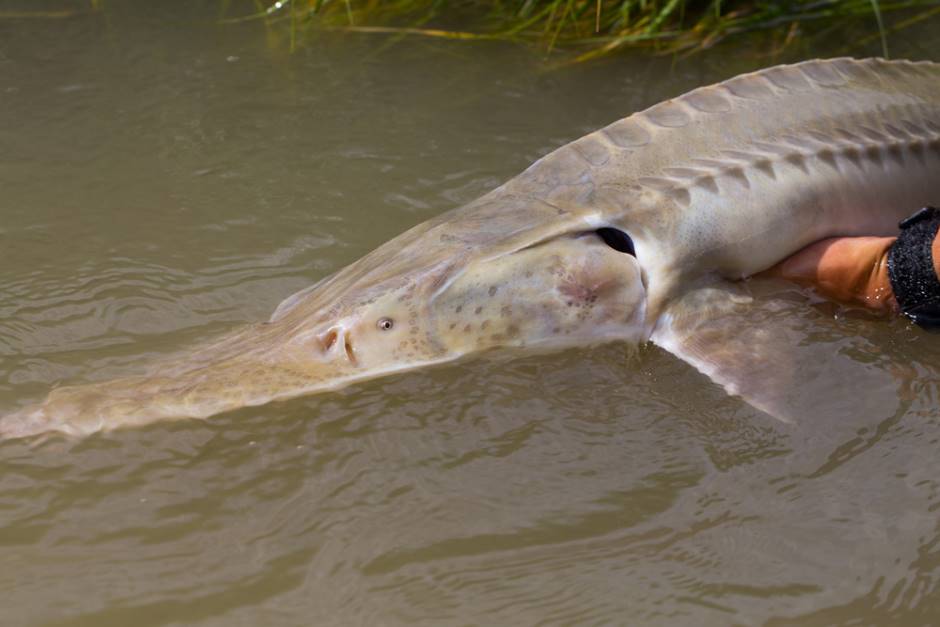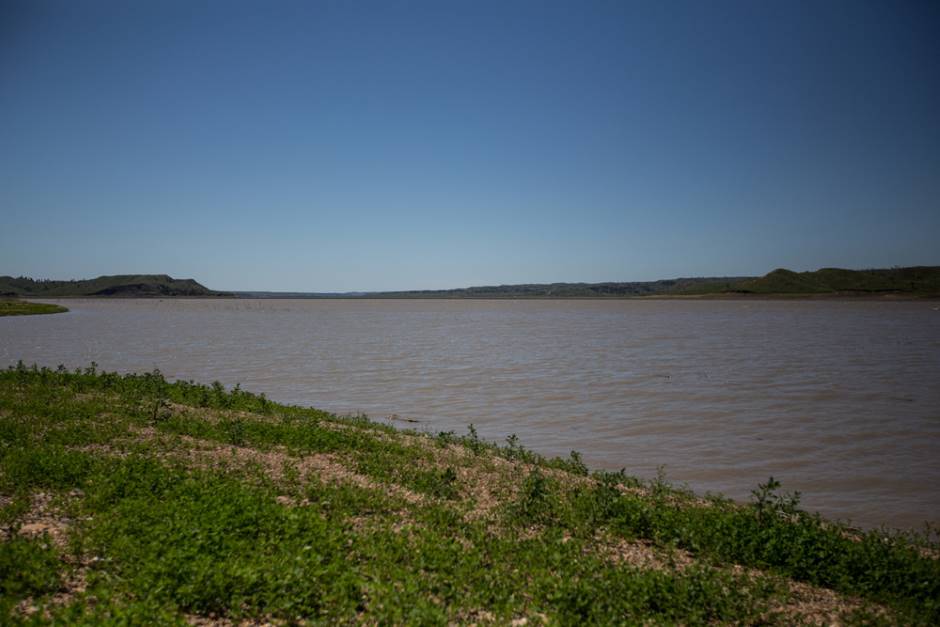Missouri River study finds anoxic zones behind disappearing pallid sturgeon
The pallid sturgeon is a relict of the dinosaur age, but in the upper Missouri River basin, they seem to be going the way of those terrible lizards. Juvenile sturgeon haven’t been spotted in the region since the species was labeled endangered in 1990, but the mechanisms behind their decline have remained shrouded in mystery.
New research from the U.S. Geological Survey, the U.S. Fish and Wildlife Service and Montana State University is pulling back the veil on the cause of the pallid sturgeon’s disappearance. The paper, published in the journal Fisheries, suggests that dead zones formed between dams in the upper Missouri River are killing off pallid sturgeon larvae, as the young fish find themselves unable to swim out of the anoxic waters.
The inspiration for the study came from previous USGS research showing where the species spawned, and also that its larvae often drifted hundreds of kilometers before growing large enough to resist the currents.
“Once we put those pieces together, where they’re spawning and how they drift, then all of a sudden it became pretty clear that these fish were drifting into the reservoirs,” said Christopher Guy, assistant unit leader at the USGS Montana Cooperative Fishery Research Unit, and professor at MSU.
The researchers conducted a field study in the river and transition zone — where the river begins to resemble a lake — above the Fort Peck Reservoir in Montana. That portion of the Missouri is a known spawning site of the pallid sturgeon, and the reservoir is well within drifting range for the larvae.
“These headwaters, at least in Fort Peck — it’s a remote habitat,” Guy said. “You’re a long way from any civilization, basically.”

Adult pallid sturgeon (Credit: Christopher Guy /USGS)
From the point of embarkment, the researchers traveled more than 30 miles by boat to reach the transition zone. There, the river’s velocity slows to a near-standstill. The only detectable current runs at the bottom, at the interface between the water and substrate. While most of the field experiments took place in the transition zone, the researchers used the river proper as a control, representing an undammed waterway.
Experiments in the transition zone ranged from releasing larvae and measuring their travel, to sampling water for dissolved oxygen levels, to studying respiration rates in the sediment. These experiments were conducted along transects established at various points perpendicular to the river’s flow. Guy said initial measurements suggested that dissolved oxygen might be the problem, but it wasn’t until they sampled at the bottom of the transition zone that the hypoxia became apparent.
“It’s really within about 20 centimeters or so from the bottom where it’s anoxic,” Guy said, noting that the physiology and life history requirements of the sturgeon make their young particularly vulnerable to the dead zones.
“They’re negatively buoyant, so they settle at the bottom and then they make these little bursts and swim up, and settle back to the bottom,” Guy said. “When they hit that anoxic zone, it doesn’t take very long for them to be without oxygen before they die.”

The transition zone where the Missouri River begins to resemble a lake above the Fort Peck Reservoir in Montana. (Credit: Christopher Guy/USGS)
Guy said that, as a researcher, his job is to present the science to agencies authorized to design management actions. While he didn’t offer any speculation about what those actions might entail, he did say that current Corps of Engineers management plans dictating the distance between conservation pools and reservoirs don’t provide enough room for the young pallid sturgeon to have a chance.
“That’s why we say in the paper, folks have got to get creative,” Guy said. “There’s got to be some change that has to occur if the Fish and Wildlife Service wants this fish to naturally reproduce.”



0 comments